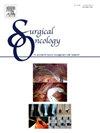Perioperative morbidity of open retroperitoneal lymph node dissection for testicular germ cell tumors: an in-depth single center analysis according to European Association of Urology guidelines of complication reporting and a scoping literature review
IF 2.4
4区 医学
Q3 ONCOLOGY
引用次数: 0
Abstract
Introduction
Retroperitoneal lymph node dissection (RPLND) is crucial in managing metastatic germ cell tumors (GCTs), particularly post-chemotherapy. Given the long-term survival of these patients, perioperative morbidity is a significant concern. However, data on RPLND morbidity using predefined reporting standards are scarce. This study aims to address this gap by utilizing updated European Association of Urology (EAU) guidelines for standardized complication reporting.
Patients and methods
A retrospective analysis was conducted on patients who underwent RPLND for GCTs between 2010 and 2022. 30-day complications were extracted from digital charts using a predefined procedure-specific catalog. Complications were graded using the Clavien-Dindo classification (CDC), and the Comprehensive Complication Index (CCI) was calculated for each patient.
Results
Sixty-nine men underwent RPLND at a median age of 32 years (IQR 25–38). Chemotherapy was administered to 64 patients (93 %), with 48 (70 %) having negative tumor markers. Median tumor diameter was 52 mm (IQR 35–83), and median operative time was 197 min (IQR 128–262). Unilateral template removal was performed in 55 patients (80 %). A total of 157 complications were reported in 66 patients (96 %), with anemia (33 %) and gastrointestinal issues (24 %) being the most common. Five patients (7.2 %) had “major” complications (CDC grade ≥ IIIa), and the median CCI was 12 (IQR 9–23). Using the CCI, the proportion of patients with a “major” complication burden increased to 14 %, compared to 8.5 % by CDC alone. The primary limitation of this study is its retrospective design and the limited 30-day follow-up period.
Conclusion
Most patients experience postoperative complications after RPLND, though severe complications are rare. These findings could improve patient counseling when discussing testicular cancer therapy options.
开放性腹膜后淋巴结清扫术治疗睾丸生殖细胞肿瘤的围手术期发病率:根据欧洲泌尿外科协会并发症报告指南和范围文献综述进行深入的单中心分析
腹膜后淋巴结清扫(RPLND)是治疗转移性生殖细胞肿瘤(gct)的关键,尤其是化疗后。考虑到这些患者的长期生存,围手术期的发病率是一个重要的问题。然而,使用预定义报告标准的RPLND发病率数据很少。本研究旨在利用最新的欧洲泌尿外科协会(EAU)标准化并发症报告指南来解决这一差距。患者和方法回顾性分析了2010年至2022年间因gct接受RPLND的患者。使用预定义的特定程序目录从数字图表中提取30天并发症。采用Clavien-Dindo分级(CDC)对并发症进行分级,并计算每位患者的综合并发症指数(CCI)。结果69名男性接受了RPLND,中位年龄32岁(IQR 25-38)。64例(93%)患者接受化疗,其中48例(70%)肿瘤标志物阴性。中位肿瘤直径52 mm (IQR 35 ~ 83),中位手术时间197 min (IQR 128 ~ 262)。55例(80%)患者行单侧模板切除。66例患者(96%)共报告157例并发症,其中贫血(33%)和胃肠道问题(24%)最为常见。5例(7.2%)患者出现“严重”并发症(CDC分级≥IIIa),中位CCI为12 (IQR 9-23)。使用CCI,有“主要”并发症负担的患者比例增加到14%,而单独使用CDC的比例为8.5%。本研究的主要局限性是其回顾性设计和有限的30天随访期。结论RPLND术后并发症多,严重并发症少见。这些发现可以在讨论睾丸癌治疗方案时改善患者咨询。
本文章由计算机程序翻译,如有差异,请以英文原文为准。
求助全文
约1分钟内获得全文
求助全文
来源期刊

Surgical Oncology-Oxford
医学-外科
CiteScore
4.50
自引率
0.00%
发文量
169
审稿时长
38 days
期刊介绍:
Surgical Oncology is a peer reviewed journal publishing review articles that contribute to the advancement of knowledge in surgical oncology and related fields of interest. Articles represent a spectrum of current technology in oncology research as well as those concerning clinical trials, surgical technique, methods of investigation and patient evaluation. Surgical Oncology publishes comprehensive Reviews that examine individual topics in considerable detail, in addition to editorials and commentaries which focus on selected papers. The journal also publishes special issues which explore topics of interest to surgical oncologists in great detail - outlining recent advancements and providing readers with the most up to date information.
 求助内容:
求助内容: 应助结果提醒方式:
应助结果提醒方式:


